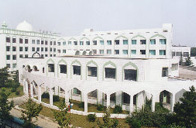 China
is a unified, multi-ethnic country. Apart from the Han
Chinese, 55 ethnic minorities live in the country. Owing
to influences of natural conditions, social environment
and traditional cultures, areas inhabited mainly by ethnic
minorities, generally speaking, are economically underdeveloped
and have a weak foundation in education. After the founding
of the People's Republic of China, the central government
adopted the policies of equality and solidarity among
all ethnic groups of the country, and prosperity for all.
Through the enactment of laws and regulations, the state
gave ethnic minority autonomous areas the right to develop
education on their own and adopted special policies supporting
education for ethnic minority people (EEMP). As a result,
EEMP developed fairly rapidly from a low level. Some ethnic
groups, which had been at a very backward social development
stage, had their own college students, with some of them
working for a doctor's degree. Both the Chinese Academy
of Sciences and the Chinese Academy of Engineering have
academicians of ethnic minority origin. The educational
development level of more than 10 ethnic groups has exceeded
the national average. China
is a unified, multi-ethnic country. Apart from the Han
Chinese, 55 ethnic minorities live in the country. Owing
to influences of natural conditions, social environment
and traditional cultures, areas inhabited mainly by ethnic
minorities, generally speaking, are economically underdeveloped
and have a weak foundation in education. After the founding
of the People's Republic of China, the central government
adopted the policies of equality and solidarity among
all ethnic groups of the country, and prosperity for all.
Through the enactment of laws and regulations, the state
gave ethnic minority autonomous areas the right to develop
education on their own and adopted special policies supporting
education for ethnic minority people (EEMP). As a result,
EEMP developed fairly rapidly from a low level. Some ethnic
groups, which had been at a very backward social development
stage, had their own college students, with some of them
working for a doctor's degree. Both the Chinese Academy
of Sciences and the Chinese Academy of Engineering have
academicians of ethnic minority origin. The educational
development level of more than 10 ethnic groups has exceeded
the national average.
|
|
By
the end of 2001, there had been 100,000 primary schools,
12,000 high schools, around 100 ordinary universities
in the autonomous districts. The total number of minority
students on campus in all kinds of schools has reached
18.5249 million, and amounted for 7 percent of the total
students. In areas of dense minority population, such
as the eight provinces and autonomous districts of Inner
Mongolia, Ningxia, Xinjiang, Guangxi, Guizhou, Yunan and
etc. the recruit rate of children at the right age has
reached 98 percent and is at the same level of the national
rate.
In minority
autonomous areas, 358 administrative units of counties
have carried out the nine years' compulsory education,
and this number amounts for 51 percent of the total number
of administrative units of counties. Various professional
and technical educations have also made some development.
The higher education has made soaring development, and
there have been 150 minority universities and colleges
with 560,000 students on campus. The construction of teacher
team has also made great achievement. The total teacher
number in minority schools has reached 925,000. At the
same time, the bilingual teaching in minority schools
has made great progress. At present, there are more than
ten thousand schools providing bilingual teaching in Han
and minority language. 21 minority languages are used.
There are more than 6 million students taking bilingual
classes. The editing, censoring, printing and publishing
of textbooks in minority languages have made |